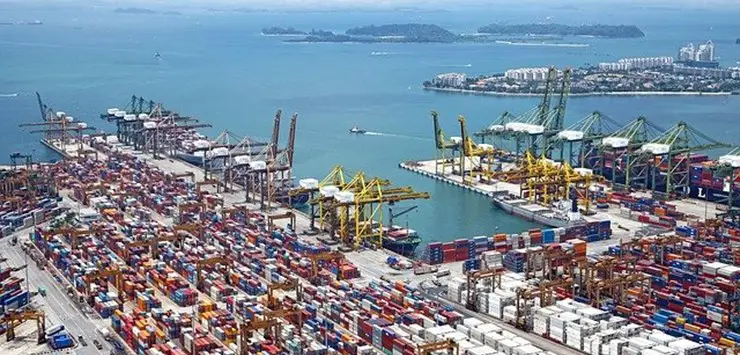The National Grain Company, a joint venture between a logistics and transportation service provider, Bahri, and the Saudi Agricultural and Livestock Investment Company (Salic) has awarded the contract for the construction of Saudi Port’s Grain Terminal at the Yanbu Commercial Port, which is situated right about halfway between the King Fahad Industrial Port to the south, the Dhuba Port to the north, and the Jeddah Islamic Port, also in the southern direction.
The contract was awarded to Haif Trading & Construction Company. It was particularly signed by the Chairman of the National Grain Company, Naseer Abdulrahman Al Issa, and the CEO Engineer to Haif Trading & Construction Company, Mansour bin Haif in the country’s capital city.
Scope of the project and features of the future Saudi Port’s Grain Terminal
Pointing reference to the terms of the contract for Saudi Port’s Grain Terminal, Haif Trading & Construction Company will have the task of constructing the grain terminal with a storage capacity of 150,000 tonnes that will be under the first phase of the project. This terminal will also include 12 silos that possess a total capacity of 96,000 tonnes alongside a flat warehouse that will possess a capacity of 60,000 tonnes.
Also Read: Riyadh Metro Project in Riyadh, the Capital of Saudi Arabia
Saudi Port’s Grain Terminal will also include a conveyor belt with a total length of 650 meters. The belt will have the ability of unloading equipment as heavy as 800 tonnes per hour of discharge capacity. The terminal will also include an area dedicated to and for packaging and the loading of trucks.
Once completed, the terminal will be able to not only handle and store, but also distribute well over 3 million tonnes of grains on an annual basis. Saudi Arabia’s Minister of Environment, Water and Agriculture and Engineer Abdulrahman Abdulmohsen Al Fadley revealed that the terminal will enhance the supply chains capabilities in the country while simultaneously providing logistic support to all importers from both the private and public sectors.

